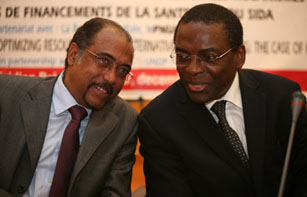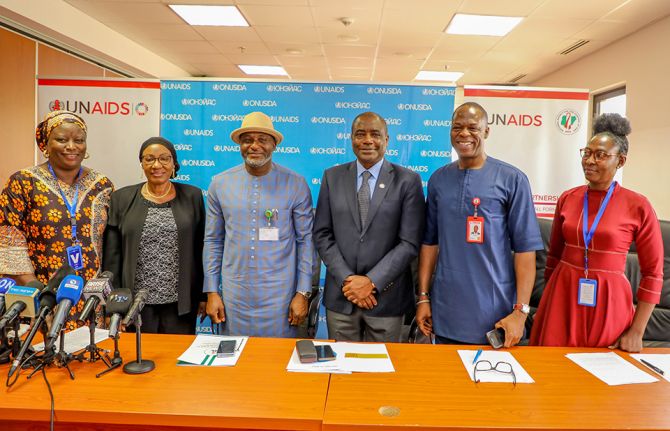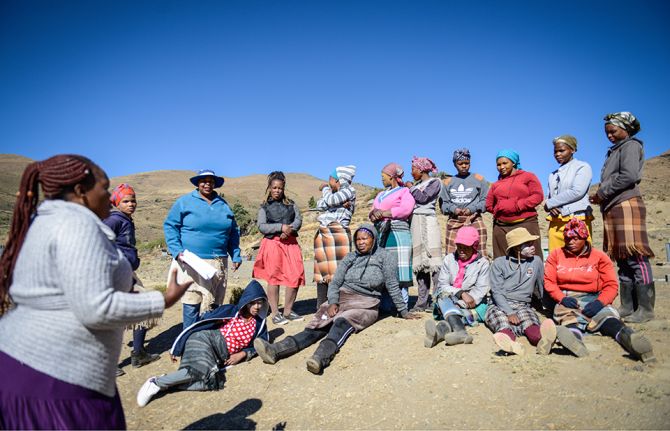
Feature Story
Leaders call on countries to optimize resources for the AIDS response
17 December 2010
17 December 2010 17 December 2010
Mr Michel Sidibé, UNAIDS Executive Director (left) and Dr Luis Sambo, WHO Regional Director for Africa, at the meeting “Optimizing Resource Use and Alternative Health Funding Mechanisms: Prospects for AIDS Funding” held in Dakar, Senegal, on 16 December.
Ministers of Health and Finance from West and Central Africa joined representatives from civil society, the private sector and the United Nations for a discussion on financing and sustaining the AIDS response in a resource-constrained environment. Participants in the meeting, co-hosted by the Joint United Nations Programme on HIV/AIDS (UNAIDS) and the World Health Organization (WHO), reflected on the impact of the global financial crisis, risk management, alternative funding sources, and optimizing the use of available resources.
According to UNAIDS estimates, international donors and national governments together mobilized US$ 15.9 billion for the global AIDS response in 2009. However, the gap between investment need and resource availability is widening—in 2009 alone, there was an estimated shortfall of US $10 billion for the global AIDS response.
“Gains in the AIDS response are fragile. Resources for AIDS must be predictable and sustainable in the long term,” said Mr Michel Sidibé, UNAIDS Executive Director, addressing participants at the meeting. “Funding for AIDS is a shared responsibility,” he added, calling on both international donors and national governments to increase their investments in the AIDS response.
Nearly 90% of AIDS spending in low-income countries comes from international sources. A new Domestic Investment Priority Index developed by UNAIDS shows that 13 countries in West and Central Africa spend less than their capacity, commensurate to their disease burden and availability of government resources.
Investments in the AIDS response have yielded results: Between 2001 and 2009, for example, 10 countries in West and Central Africa reduced new HIV infections by more then 25%. In that same period, seven countries in the region stabilized the rate of new HIV infections.
To sustain these gains, meeting participants underscored the importance of consolidating HIV programmes and supporting long-term funding approaches that went beyond crisis management. Accountability around resource allocation would be critical, they noted.
Related
 Impact of the pause of US foreign assistance in Côte d'Ivoire
Impact of the pause of US foreign assistance in Côte d'Ivoire

19 February 2025


